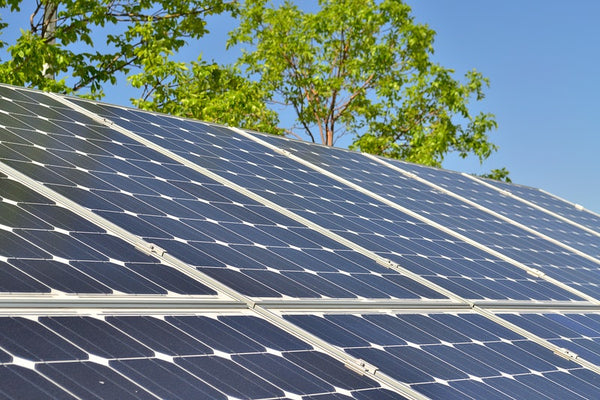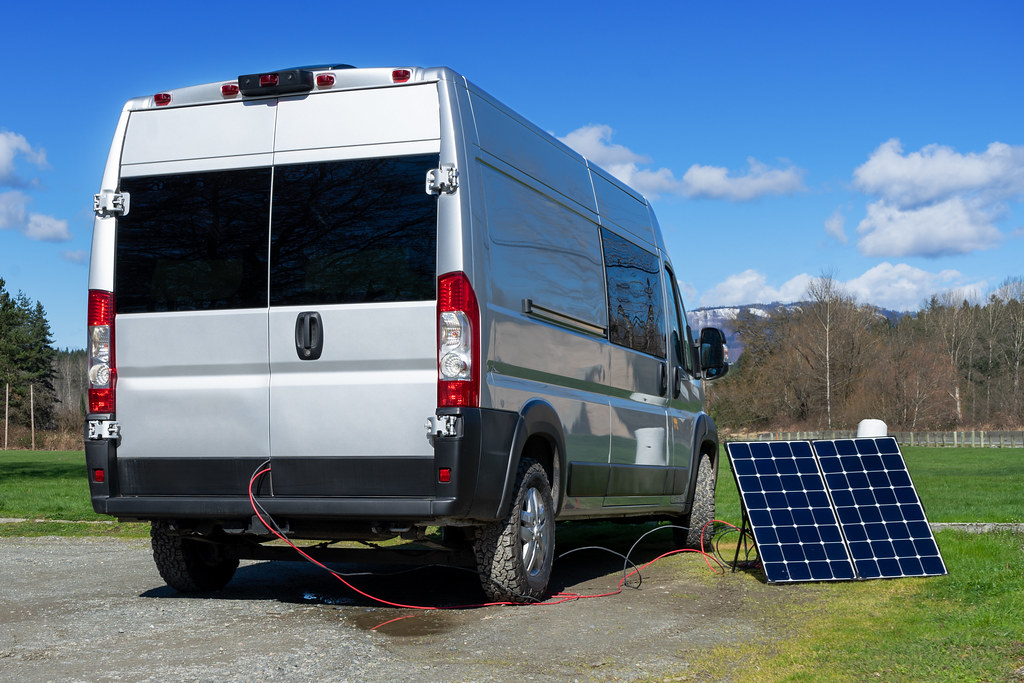Solar Power Blog

How Many Solar Panels Do You Need?
At Solar Us Shop, we often get asked one question in many different ways:
“How many solar panels do I need?”
There are a lot of different answers to this inquiry, all of which depend on a few key variables. These include
- What is actually being powered (i.e. a home, RV, business, etc.)
- The size and efficiency of the solar panels
- The location of the installation
- And more
So while some products, such as our popular outdoor solar barn lights include the exact number of panels necessary to power themselves, most things in life require a bit more calculation.
In this article, we’ll share a few quick tips and tricks to help you determine how many solar panels you may need for your unique scenario before exploring averages for installations of every variety.
How to Determine Your Number of Solar Panels
To determine the number of solar panels you need in any given situation, you must first know your power demand. By only producing roughly the same amount of solar energy that you (or your appliances) will be consuming, you can save money and time on costs otherwise spent unnecessarily bulking up your renewable energy system.
To calculate your energy consumption, multiply the wattages of your electrical devices by their approximate daily runtime. For homes, your total property energy use is easy to see on your monthly energy bills.
Once you find your daily energy demand, you’ll need to match that with the approximate amount of power to be produced by your panels. Solar panel capacities are measured in watts, with low-priced options usually near 100W and premium products at 350W and higher.
Here, there are a few good things to know while determining the size of your system, such as
- That solar panel wattages add up (i.e. 2 x 100W panels is the same as 1 x 200W panel)
- You can expect roughly 4 hours of peak production each day (so 200W of solar panels would generate about 800 Watt-hours, or 0.8 kilowatt-hours, daily)
- & solar panels slowly lose efficiency over time (so most people overestimate)
How many solar panels do you need to…
To give you an estimate on the number of solar panels required for your particular energy needs, here are four of the most commonly asked questions under the umbrella of “how many solar panels will I need?”
…Power your House?

To power an average American home, a set of solar panels must be able to produce roughly 10,632 kilowatt-hours (kWh) of electricity each year, or about 30 kWh daily. While the number of peak sunlight hours varies throughout the calendar year, using an average of 4 per day, this means that an average solar energy system should be approximately 7.5 kW (30kWh / 4 hours) in total capacity.
Using 300 or 350-watt solar panels, this translates to an average of 21 to 25 solar panels to power a home in the United States. Obviously, the exact number of panels you will need depends on your location, home energy demand, the efficiency of the panels, and several other lesser variables.
…Run an RV’s Electricity?

As solar panels can generate power anywhere the sun shines, they are one of the most popular forms of electricity for use in recreational vehicles (RVs), campers, vans, school buses, and other forms of homes-on-the-go.
Like in residential installations, the number of solar panels necessary to run an RV is highly dependent on individual energy needs, i.e. the quantity and size of all of the electrical appliances on board. While some barebones campers have an electric stove, a fan, and a few lights, more luxurious set-ups may include televisions, microwaves, air conditioning, and other larger appliances with higher energy demands.
It is also important to remember that RVs are “off of the grid,” so any set of panels must be connected to a battery bank or solar generator in order to power electric devices. In addition to the correct number of panels, RV owners must pay close attention to the size of their electricity storage batteries so that there will be enough energy stored to continuously run devices overnight.
On average, most RV owners pack about 400 to 700 watts of solar power on their roofs to keep their batteries charged and appliances running. And while residential panels run upwards of 300W per piece, boondockers, weekend warriors, and full-time RVers alike tend to find more cost-effective solutions with 100 or 200-watt panels. Therefore, anywhere between two to ten solar panels is sure to do the trick to power your RV’s electrical components.
…Charge a Tesla?

With electric vehicle adoption on the rise in the United States and around the world, more and more people are trying to power their vehicles with solar energy. By combining an efficient EV charging station with a full solar power array, it is now possible to fuel your car with the sun’s energy for a low-cost and emission-free ride.
While assorted Tesla models (as well as other EV brands) have various battery sizes, the number of panels necessary to fill up your tank depends on the specific car, as well as the property’s solar potential. On average, experts agree that fueling a Tesla requires about eight to ten solar panels to completely offset the electricity demand from daily charging.
…Power the World?

Powering the entire world with solar panels seems a bit far out, however, it is certainly not impossible. While daylight hours and seasonality propose difficulties in the most northern and southern parts of the globe (where wind energy or hydropower may be a more effective alternative), the earth certainly receives enough daily sunlight to generate the world’s supply of electricity using PV solar panels.
As global energy demand continues to rise, it is very difficult to say exactly how many solar panels would be required to supply the entire earth with renewable electricity. It becomes even more difficult to calculate when you consider that the panels would need to be as close to their end-users as possible to reduce power loss and that we couldn’t simply set up a massive array in a strong solar area like Arizona or New Mexico.
Estimates around the web vary greatly, with sources guessing that it would take anywhere from 23 billion to 51 billion solar panels to power the entire world. Sounds crazy right? Well, in conjunction with wind, hydro, and other renewable energies, it is important to remember that solar does have the potential to meet the world’s energy demand without causing large amounts of unnecessary harm to the environment.
Wrapping Up
In summary, solar panels can be used to meet virtually any electric power demand, and installations are typically only constrained by available space, budget, and sunlight hours. While it could take a few dozen solar panels to power your home, a handful may only be required to run an RV’s appliances or even continuously fuel an electric vehicle.
Always on the lookout for new ways to bring solar power into people’s lives, Solar Us Shop is one of the best places to find environmentally friendly products online. Please let us know if you have any questions at all, or visit our solar power FAQ to learn more.

